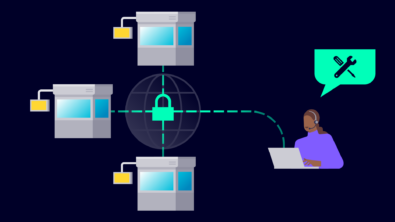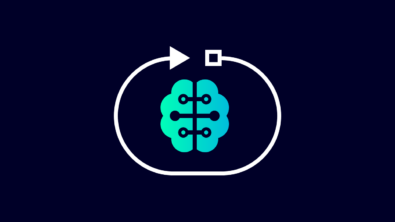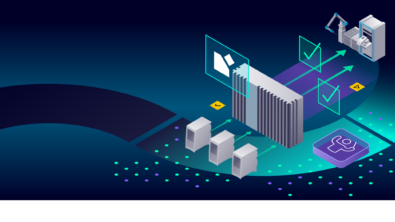The role of AI between real and digital
As the manufacturing industry continues to move along the path of digital transformation maturity, traditional practices may not be able to keep pace with the modern requirements. As discussed in the previous parts of this series (Part 1 and Part 2), maintenance is one of the areas with the most to gain from a move to a more digital world, however the benefits AI stands to bring don’t stop with maintenance. In a recent podcast, Dr. James Loach, Head of Research for Senseye Predictive Maintenance, discussed the ways Senseye stands out from the crowd, the role of AI decision support systems across all industries, as well as the way AI can help deal with the often less than ideal real world. Check out the full episode here or keep reading for a summary of the highlights.
AI is often thought of as a magic bullet to solve any data-related problem while at the same time being a black box whose inner workings are inscrutable even to its creators. By contrast, James describes the AI within Senseye as a very practical, reliable, dependable system that’s easy to setup, easy to use, scalable, and just works – a reliable, solid colleague. Even as they work toward this goal, there is still the inherent element of fuzziness around both inputs and results, not through any fault in the system but rather because the real world itself is often fuzzy and lacking clear, black and white answers.
Often in the real world, until something happens it’s impossible to say with 100% certainty that it will happen. Prediction systems, forecasts and expert analysis can only offer so much when it comes to interpreting vague, incomplete, or even contradictory data since the real world simply isn’t as rigorously well defined as the theories and math that underpin prediction systems. This is a big part of the reason Senseye took the approach of creating a decision support system, rather than trying to create a model that can do AI magic 1% of the time, they created a model with a better ability to interact with the world the way it actually exists.
The intersection of the real and virtual world is where James sees AI having a huge impact, thanks to its ability to handle the non-ideal real world better than traditional algorithms. With the recent growth of large language models (LLMs), AI will be even better equipped to bridge the gap between the real and digital worlds, not only allowing for easier communication with human operators but also the ability to better process data ingested from the real world. It is from this area that James sees the progress that Senseye is making spreading most into other industries as they look for ways to not just better automate, but better interact with smart, connected systems.
LLMs offer a unique ability for software to understand the machines it’s operating on to, in a sense, understand not just what it is doing but why. This ability was once limited to human operators but, by integrating it directly into maintenance and monitoring software, the system itself can become more capable without needing to be programmed explicitly with every piece of expert knowledge. These benefits won’t be exclusive to predictive maintenance tools like Senseye either but will serve as a model for improving the prowess and ease of use of technology going forward.
AI is a rapidly advancing field, with the cutting-edge technology of today already commonplace tomorrow, it can seem like the world of AI is advancing too fast to predict what the next technological leap will be. But, by looking at the AI technology of today, it is still possible to catch a glimpse of what the future will hold. Senseye presents one such glimpse, showing a future where AI can help software become aware of the systems its running on while also building a bridge between humans and technology. While this technology is currently deployed with only limited scope, it still serves as a model for what the future will hold.
To learn more, check out the full podcast here or the transcript here.
Siemens Digital Industries Software helps organizations of all sizes digitally transform using software, hardware and services from the Siemens Xcelerator business platform. Siemens’ software and the comprehensive digital twin enable companies to optimize their design, engineering and manufacturing processes to turn today’s ideas into the sustainable products of the future. From chips to entire systems, from product to process, across all industries. Siemens Digital Industries Software – Accelerating transformation.


